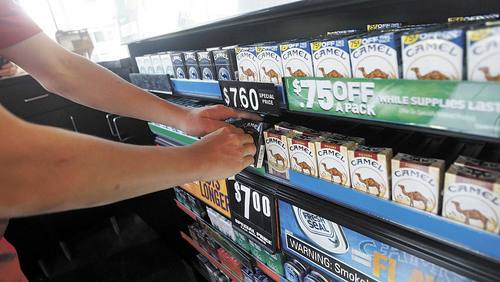'Teens choosing health': Smoking hits a landmark low
Cigarette smoking among high school students in the United States has reached a landmark low in a survey health officials have been conducting every two years since 1991.
Just 15.7% of teens were current smokers in 2013, down from 27.5% when the survey began and 36.4% in the peak year of 1997, the federal Centers for Disease Control and Prevention reported Thursday. That means the nation has already met the government’s official goal of getting teen smoking below 16% by 2020.
“I think the bottom line is that our teens are choosing health,” CDC Director Tom Frieden said.
Frieden was referring not just to the progress on smoking, but to other gains in healthy behaviors picked up in the nationally representative Youth Risk Behavior Survey of more than 13,000 teens. Data for the report also come from state and local versions of the survey. The surveys are conducted at public and private high schools.
The data show teens are drinking less alcohol and fewer sodas, getting into fewer physical fights and having less sex with more birth control. Also, despite all the recent news about school shootings, the share of students threatened or injured with a gun, knife or other weapon on school property has dropped to 6.9%, from a peak of 9.2% in 2003.
But it’s not all good news: Condom use among the sexually active (about one third of teens) is down to 59%, from a peak of 63% in 2003. Condoms remain essential for protection from HIV and other sexually transmitted diseases, but teens may not be getting the message, Frieden says.
Even the news on tobacco is mixed: A once-rapid decline in cigar use has slowed, leaving cigars as popular as cigarettes with high school boys. Cigars were smoked by 23% of 12th grade boys in the month before the survey. Smokeless tobacco use hasn’t changed since 1999, holding at about 8%. Other surveys have shown increases in e-cigarette and hookah use. And the declines in cigarette use are uneven from place to place, reflecting varying tobacco control efforts, Frieden says.
“We’re moving in the right direction,” with the help of increased cigarette taxes, better educational campaigns and other measures, says Vince Willmore, a spokesperson for the non-profit Campaign for Tobacco Free Kids, Washington, D.C. “But the fight against tobacco isn’t over and it can’t be over when you still have 2.7 million high school kids who smoke.”
The survey, a treasure trove of data on more than 100 risky behaviors, “tells us what kids do but not why,” says Stephanie Zaza, director of CDC’s division of adolescent and school health. Among other details:
• 25% of students were in a physical fight in the year before the survey, down from 42% in 1991. Just 8% fought at school, down from 16%.
• 32% watched three daily hours of TV, down from 43% in 1999. But some of that time apparently shifted to computers, with 41% using a computer for non-school reasons at least three hours a day, up from 22% in 2003.
• 27% had at least one soda a day, down from 34% in 2007.
• 41% of those who drove admitted to texting or e-mailing while driving. CDC first asked about texting in 2011, but with a differently worded question, so it can’t say whether rates are up or down.
• 2.3 % had ever used heroin, a number that has remained fairly steady through the years. But in some large urban school districts, use was much higher, up to 7.4%.
http://www.usatoday.com/story/news/nation/2014/06/12/teen-cigarette-cdc-survey/10368235/



